 A quadrilateral is a polygon with four sides. The various types of quadrilaterals are named according to whether sides are parallel and/or equal in length, and whether there are right angles. 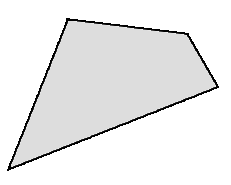
Quadrilateral: A quadrilateral has four sides. All the shapes we look at on this page are quadrilaterals. Some will have special features. 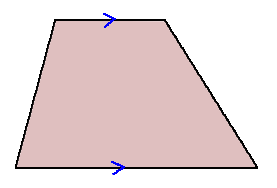
Trapezoid: A trapezoid is a quadrilateral with just one pair of parallel sides (blue arrows). 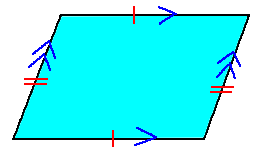
Parallelogram: A parallelogram is a quadrilateral with: - opposite sides parallel (blue arrows) - opposite sides equal (red dashes) All the remaining shapes on this page are parallelograms. 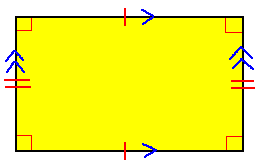
Rectangle: A rectangle is a parallelogram with 90° angles. 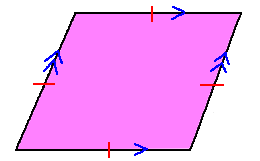
Rhombus: A rhombus is a parallelogram with four equal sides. 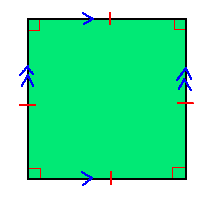
Square: A square is a parallelogram with four equal sides and four 90° angles. A square is also a rhombus with 90° angles. Additional Facts about Quadrilaterals Parallelograms (including rectangles, squares, and rhombuses):  In any parallelogram, angles on the left or right side
In any parallelogram, angles on the left or right side (or angles on the top or bottom) add to 180°. This is the 'C' pattern in parallel lines. 
In any parallelogram, the four angles add to 360°. This is because a parallelogram is composed of two triangles. Trapezoids: 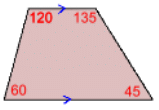
With one set of parallel sides, the angles on the left side (or right side) add to 180°, again because of the 'C' pattern in parallel lines. Reectangles including squares:   The diagonals are equal lengths. (This is a fact used by carpenters to square up a frame). |